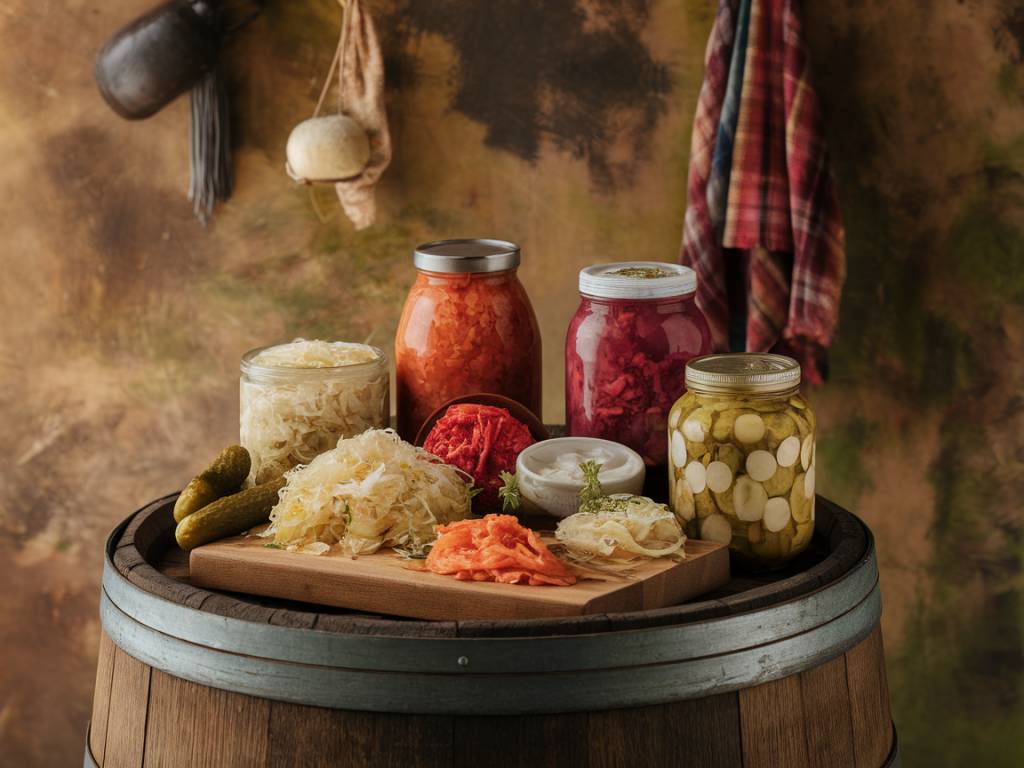
The Art of Fermentation: Why It’s Taking Over Home Kitchens
Have you noticed lately how everyone seems to be fermenting something at home? From tangy sourdough starters bubbling on countertops to jars of colorful kimchi tucked neatly into refrigerators, fermentation is no longer reserved for food enthusiasts or professional chefs. It’s steadily becoming a staple in home cooking—and for good reason.
But what’s behind this rising trend? Why are so many home cooks becoming captivated by the ancient art of fermentation? Let’s take a deep dive into what makes this culinary movement not only a delicious endeavor but also a practical and health-boosting one for anyone to enjoy.
A Simple Concept with Big Benefits
At its core, fermentation is the process of encouraging beneficial bacteria to break down sugars and create something entirely new—whether it’s sourdough bread, tangy yogurt, or fizzy kombucha. What might seem like a complex chemical process is actually much simpler than you’d think, requiring only basic ingredients, some patience, and a willingness to experiment.
But it’s not just about taste (though that’s a huge part of the appeal). Fermented foods pack a powerful nutritional punch. They’re rich in probiotics—good bacteria that can improve gut health, boost immunity, and even enhance mental well-being. Plus, they’re an excellent way to minimize food waste by transforming perishable ingredients into shelf-stable, flavorful creations.
Rediscovering Traditions at Home
One of the most exciting aspects of fermentation is that it connects us to culinary traditions passed down through generations. Practiced by cultures worldwide, from Korean kimchi to German sauerkraut to Indian dosa batter, fermentation is as old as humanity itself. It’s a deeply satisfying way to feel rooted in history while experimenting in your own modern kitchen.
In an era where we’re increasingly craving a sense of connection—both to our food and to our heritage—it’s no wonder fermentation is making a splash. There’s something undeniably magical about creating a loaf of sourdough bread from nothing more than flour, water, salt, and time. It’s a reminder that the simplest things often bring the most joy.
Fermentation Meets Sustainability
Perhaps one of the greatest appeals of fermentation is how sustainable it can be. It allows you to make the most out of fresh ingredients that might otherwise go to waste. Got a pile of overripe vegetables? Perfect for a batch of spicy pickles or quick sauerkraut. Leftover fruits? Turn them into a refreshing homemade vinegar.
Fermentation also encourages a shift away from overly processed, store-bought products. Instead of buying yogurt packed with artificial sweeteners or sodas loaded with preservatives, many home cooks are opting to create healthier versions themselves. Beyond the environmental benefits, there’s an undeniable satisfaction that comes with taking control over what you put into your body.
Getting Started with Fermentation at Home
If you’re intrigued but a little intimidated, don’t worry; fermentation is more forgiving than it seems. Here are a few tips for getting started at home:
- Start small: Begin with beginner-friendly recipes like sauerkraut or yogurt. These are virtually foolproof and require minimal ingredients.
- Gather the essentials: You don’t need fancy equipment, but glass jars, clean cloths, and rubber bands will become your best friends.
- Be patient: Fermentation takes time. As tempting as it may be, resist the urge to rush the process—good things come to those who wait.
- Stay safe: Always ensure that your tools and ingredients are clean to avoid contamination, and trust your nose. If something smells or looks off, it’s better to toss it and start over.
- Experiment: Half the fun of fermentation is playing with flavors! Try adding spices, herbs, or chili to your recipes for a unique twist.
The Joy of Fermented Recipes
If you’re ready to dive in, here are some tried-and-true fermentation projects to inspire you:
- Kimchi: A spicy, garlicky cabbage dish that can elevate everything from rice bowls to omelets. It’s a fantastic way to get your daily dose of probiotics.
- Kombucha: This fizzy, slightly tangy tea is both refreshing and endlessly customizable. Brew it at home with some tea, sugar, and a SCOBY (symbiotic culture of bacteria and yeast).
- Sourdough Bread: Flour, water, and salt are all you need to create this crusty and satisfying homemade classic. Plus, watching your starter grow is somehow strangely therapeutic.
- Pickled Vegetables: Carrots, cucumbers, radishes—you name it. Pickling is one of the easiest and most versatile forms of fermentation.
- Miso Paste: While slightly more advanced, making your own miso is incredibly rewarding and a must-try for any fermentation enthusiast.
Why Now Is the Perfect Time to Ferment
In today’s fast-paced world, you might wonder: why spend extra time fermenting food when you can just buy it at the store? The answer lies in more than just cost savings (though that’s definitely a perk). Fermenting at home puts you in control of the process, lets you build new skills, and offers a mindful pause in an otherwise hectic day.
Plus, let’s face it: there’s a sense of pride that comes with serving your own homemade kombucha at brunch or pulling out a jar of kimchi you fermented yourself to share with friends. It’s a small yet satisfying way to infuse creativity into everyday life.
Final Thoughts on the Fermentation Trend
The rise of fermentation in home kitchens isn’t just another passing fad. It’s rooted in a desire for healthier, more sustainable, and more delicious food. Whether you’re looking to reconnect with culinary traditions, reduce waste, or simply enjoy the process of creating something from scratch, fermentation offers endless possibilities.
So why not give it a try? Grab a jar, some veggies, and a bit of salt—and see where the journey takes you. After all, the next big food trend might just be brewing on your kitchen counter!


